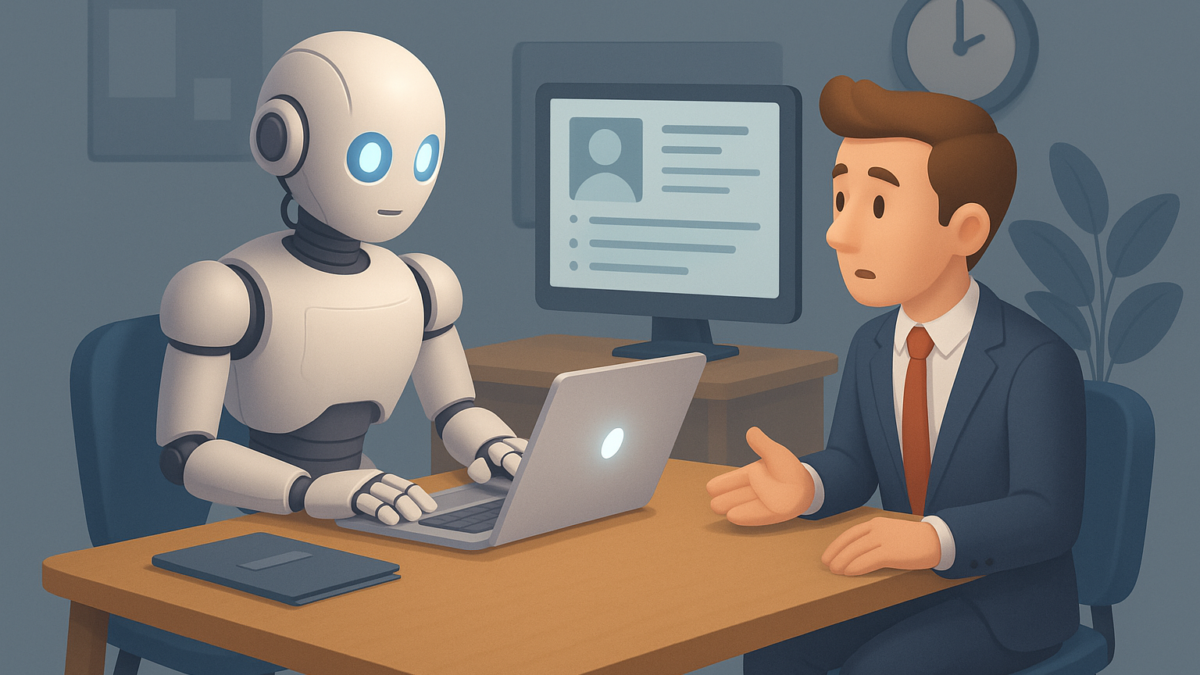The Rise of AI-Powered Recruitment Bots: Efficiency vs Candidate Experience
Introduction: A Hiring Revolution in Progress
The hiring process has always been a balancing act between speed and quality. Recruiters sift through thousands of resumes, schedule countless interviews, and juggle candidate communications—all while trying to deliver a positive experience.
Enter AI-powered recruitment bots. In 2025, these bots have become mainstream, promising to streamline hiring, cut costs, and improve decision-making. But with efficiency gains come new challenges: Are bots making the hiring process better for candidates, or worse?
This tension—between efficiency and candidate experience—is defining the next phase of recruitment technology.
What Are AI-Powered Recruitment Bots?
AI recruitment bots are intelligent systems that use natural language processing (NLP), machine learning, and predictive analytics to automate parts of the hiring process.
Common Functions:
- Resume Screening: Automatically filtering candidates against job descriptions.
- Chatbots: Handling FAQs, initial interviews, or skill assessments.
- Scheduling Assistants: Coordinating interview times seamlessly.
- Predictive Analytics: Estimating candidate fit based on historical hiring success.
These bots integrate with Applicant Tracking Systems (ATS) and HR platforms, becoming virtual recruiters that never sleep.
The Efficiency Advantage
For employers, the benefits are clear:
1. Speed & Scale
Bots can analyze thousands of resumes in seconds—something a human recruiter could never match.
2. Cost Savings
By automating repetitive tasks, companies reduce reliance on large recruiting teams.
3. 24/7 Availability
Candidates get immediate answers, improving response times.
4. Data-Driven Insights
AI learns from past hires, improving the accuracy of recommendations over time.
The result? Faster hiring cycles and reduced time-to-fill positions.
The Candidate Experience Dilemma
While efficiency is appealing to employers, candidates often face challenges with recruitment bots.
1. Dehumanization of Hiring
Applicants may feel like they’re interacting with machines rather than people, reducing emotional connection.
2. Lack of Transparency
Bots may reject candidates without explaining why, leaving applicants frustrated and disengaged.
3. Bias in Algorithms
If not monitored, AI systems can inherit or amplify biases present in historical hiring data.
4. Limited Personalization
While bots are improving, they still struggle to replicate human empathy, humor, or nuanced feedback.
For candidates, this can make the process feel cold—even if it’s faster.
Striking the Balance: Efficiency and Experience
The key for HR leaders is not choosing between efficiency and candidate experience, but blending both.
Best Practices:
- Hybrid Approach
Use bots for early-stage tasks (resume screening, FAQs), but ensure human recruiters take over at key decision points. - Transparent Communication
Let candidates know when they’re interacting with AI and how decisions are made. - Bias Audits
Regularly audit AI systems to check for discriminatory patterns and ensure fairness. - Human Touchpoints
Incorporate personal outreach, even if minimal, to maintain empathy in the process. - Feedback Loops
Provide clear feedback—even if AI-driven—so candidates understand outcomes.
Real-World Example
A global technology company implemented AI-powered chatbots to handle initial candidate screening. The results were impressive:
- 60% reduction in recruiter workload
- 40% faster time-to-hire
- Improved scheduling efficiency
However, candidate surveys revealed dissatisfaction: many felt their applications weren’t truly “seen.” The company adjusted its approach by introducing human callbacks for shortlisted candidates, significantly improving satisfaction scores.
Future of AI in Recruitment
By 2030, recruitment bots will be even more advanced, with features such as:
- Emotional Intelligence AI: Detecting candidate sentiment and adapting responses.
- Video Interview Analysis: Assessing tone, confidence, and body language alongside skills.
- Hyper-Personalization: Bots delivering tailored job recommendations and career guidance.
- Seamless Human-AI Collaboration: Recruiters focusing on relationship-building while bots handle logistics.
The future of hiring will not be humans vs machines—it will be humans and machines working together to create better experiences.
Final Thoughts
AI-powered recruitment bots are here to stay. They offer unmatched efficiency and scalability, making them invaluable in today’s fast-paced hiring environment. But without careful implementation, they risk alienating candidates and eroding trust.
The most successful companies in 2025 will be those that treat AI not as a replacement for human recruiters, but as a partner—using bots to enhance speed while preserving the empathy and personalization that candidates value most.
Call-to-Action (CTA)
Want to explore how AI-driven tools can transform recruitment while keeping candidate experience at the center?
Stay tuned to iTMunch for insights on the latest HRTech trends and discover how businesses can balance innovation with empathy.
You May Also Like: AI-Driven Credit Scoring: The Future of Risk Assessment in FinTech





